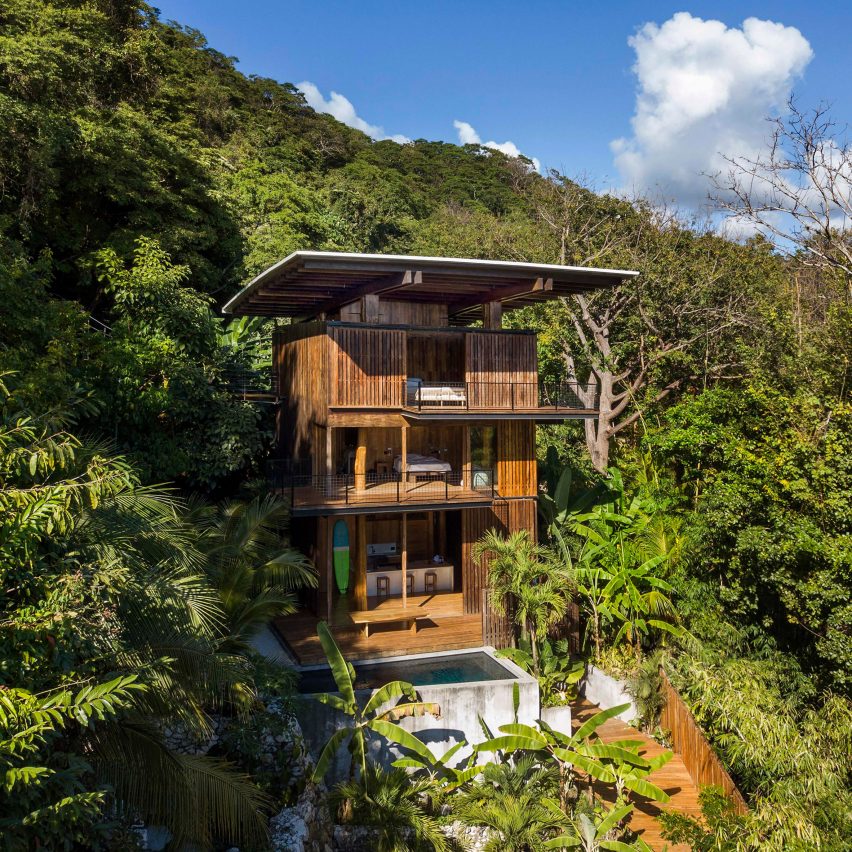
American firm Olson Kundig Architects has completed a three-storey nature retreat in Costa Rica, featuring local teak wood, slatted walls and columns made of tree trunks.
Envisioned as a surfer hut, the Costa Rica Treehouse is located in a dense jungle near Playa Hermosa beach.
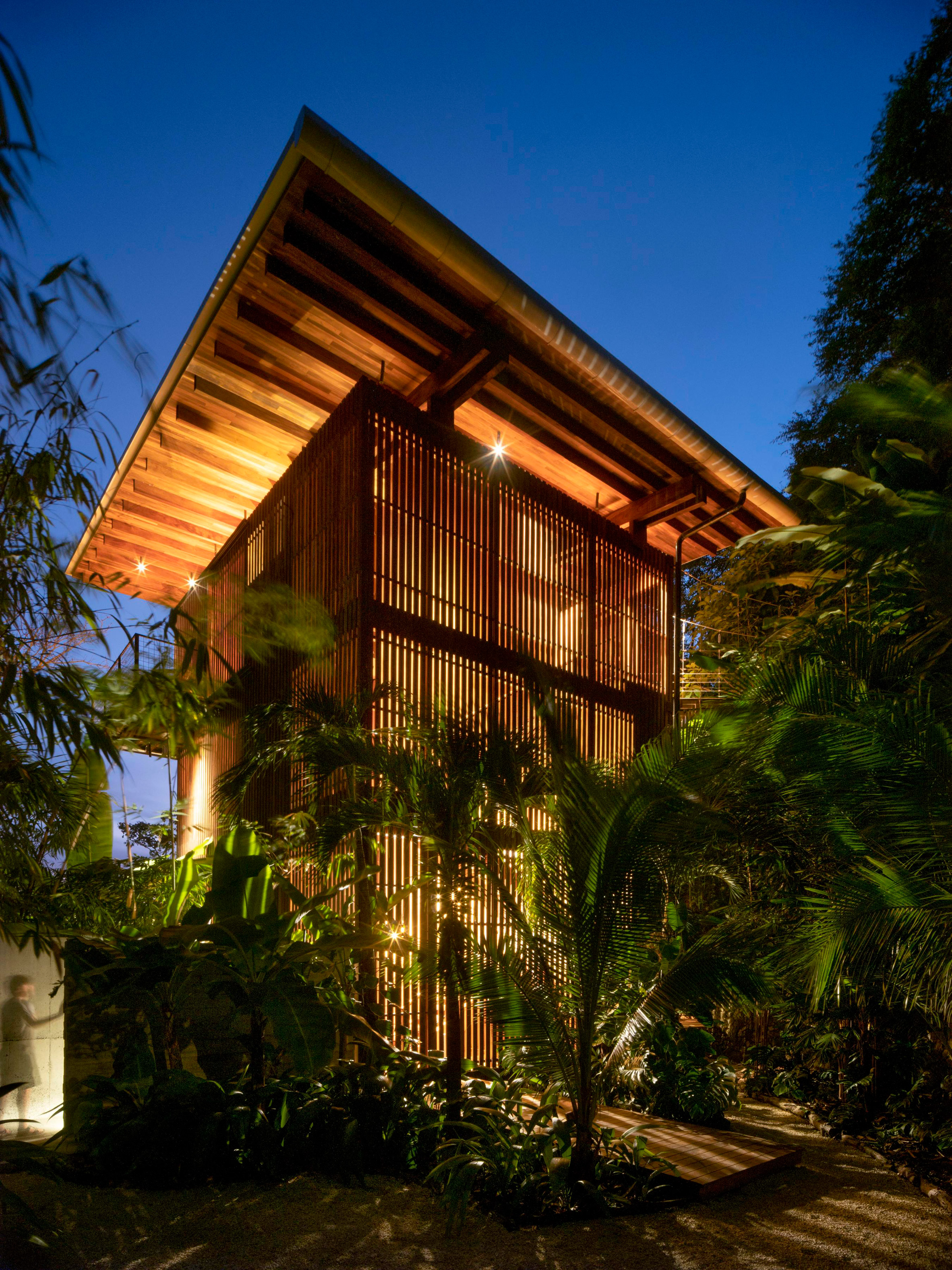
The clients, who lives in the US, are surfers and passionate environmentalists. The house is meant to embody "their deep commitment to sustainable land management" in the small Central American country, which is known for its rainforests, volcanoes and scenic coastline.
"The project has a relatively light, natural footprint on the landscape, both in terms of the site itself, but also in using available local materials that are helping advance the next level of environmental stewardship in Costa Rica," said Tom Kundig, cofounder of Olson Kundig, in a project statement.
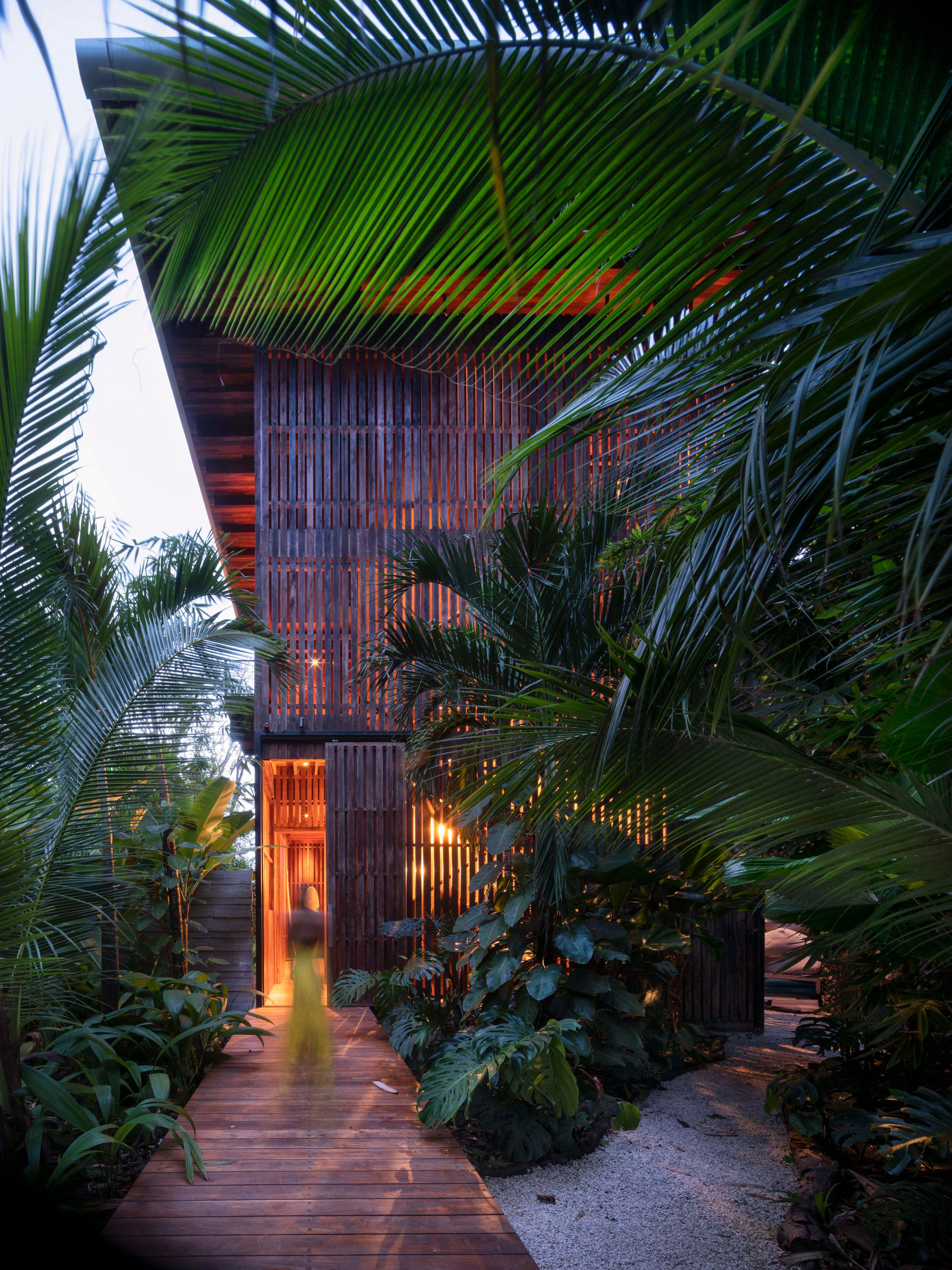
The dwelling was constructed using teak and cenizaro wood that was locally harvested. A large roof made of wood and metal extends beyond the building, providing shade and protection during rainstorms.
Walls consists of wooden screens that allows daylight and fresh air to flow into the enclosure. In certain areas, the walls slide open and offer a direct connection to the lush natural surroundings. The second floor is the only level with glass windows.

"Designed to operate passively, the home is intended to breathe and remain open to the elements in this temperate semi-tropic environment," the studio said.
Square in plan, the building climbs three levels, with each floor providing a different experience of the landscape.
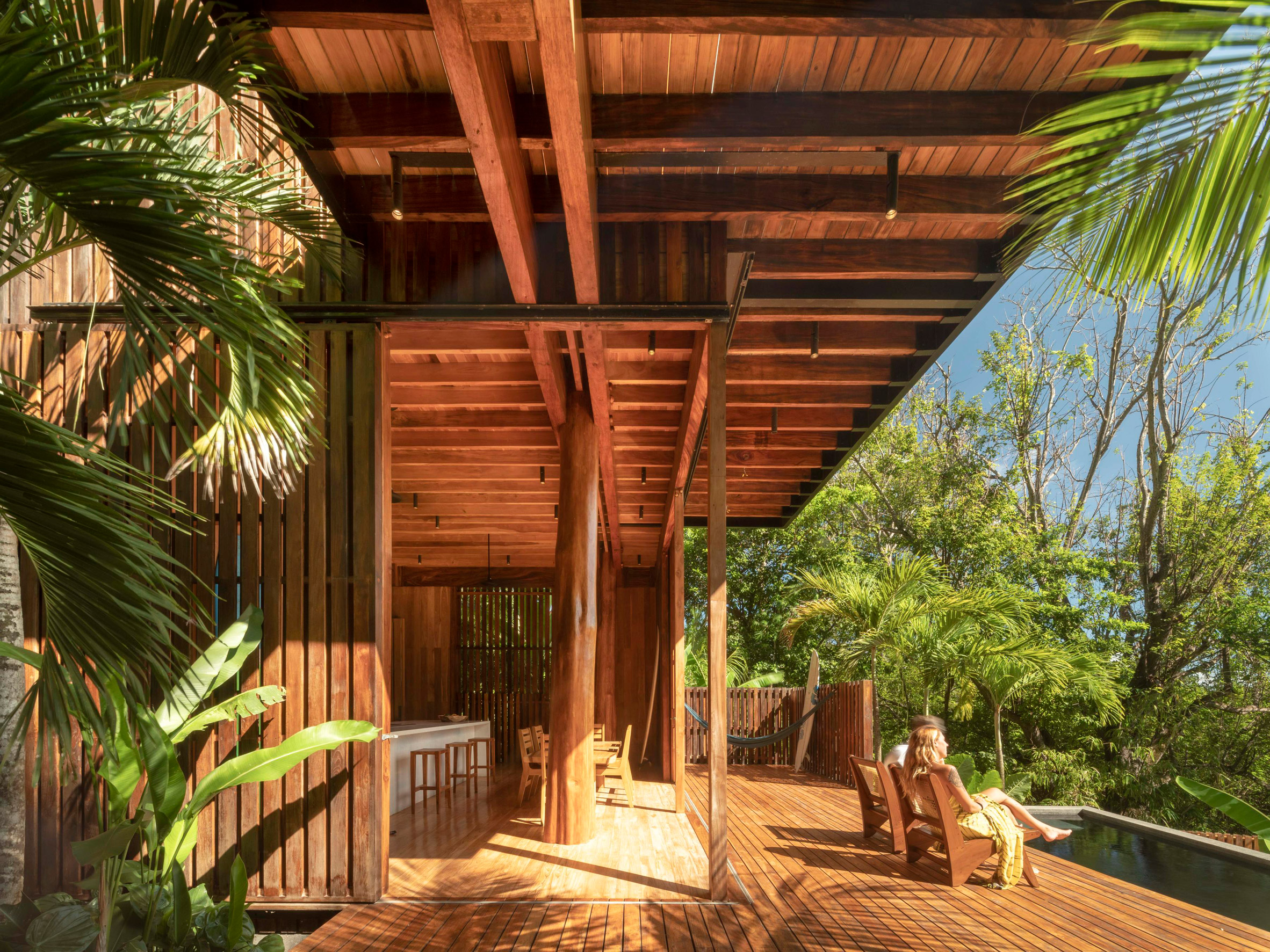
At the ground level, the building merges with the forest floor, and also connects to a concrete swimming pool that rises up from the sloped site. The main level contains an open-plan kitchen and dining area, along with storage space.
The middle level – which encompasses a bedroom, bathroom and additional storage – is nestled within the trees.
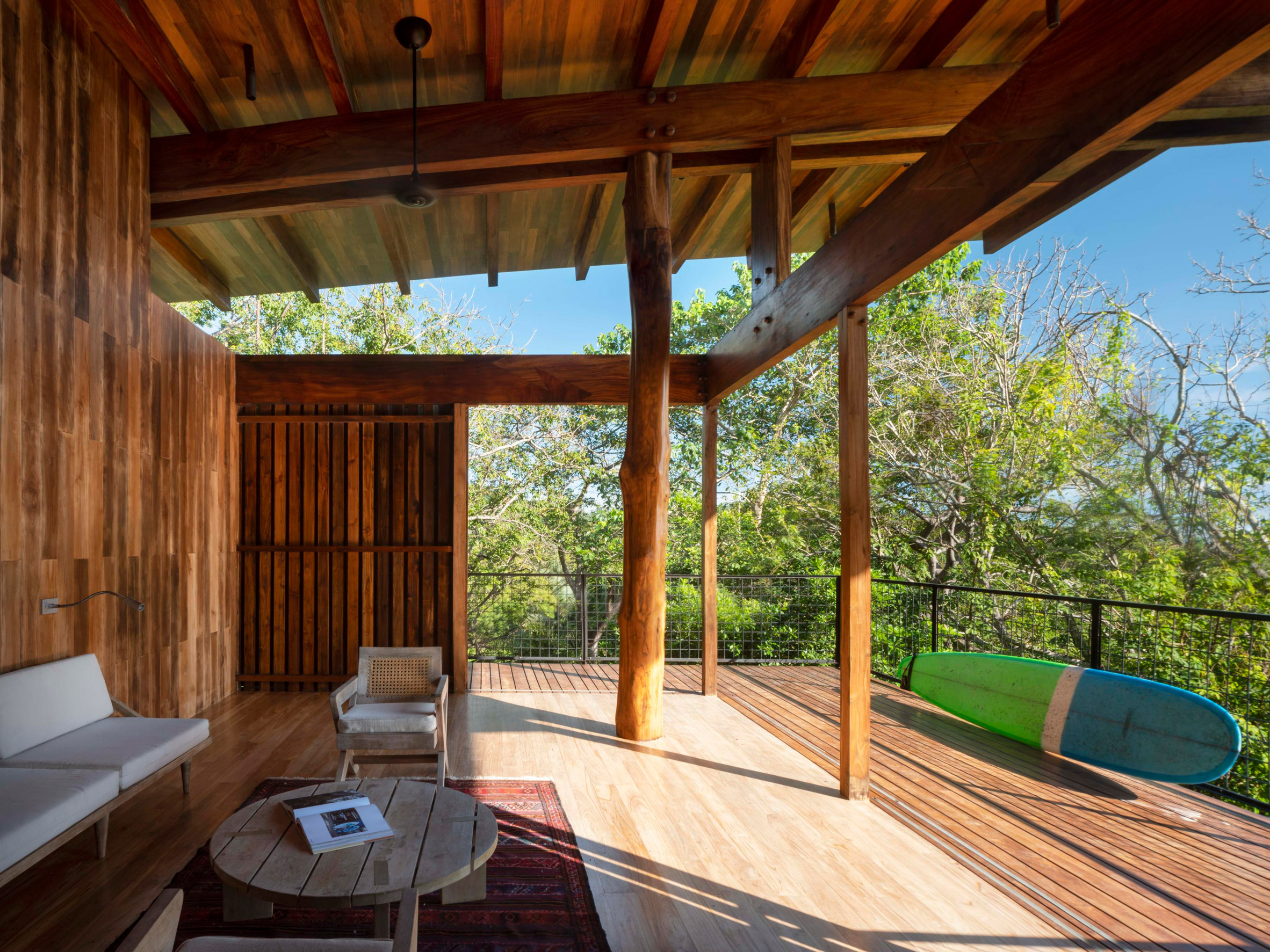
The top level houses a living room and bathroom. This floor is lifted above the forest canopy, enabling views of the jungle and ocean.
"The project has an intentionally small footprint and is quite tall," said Tom Kundig in a project statement. "This allowed us to maintain a light influence on the site while engaging with the natural landscape in different ways on all three levels of the house."
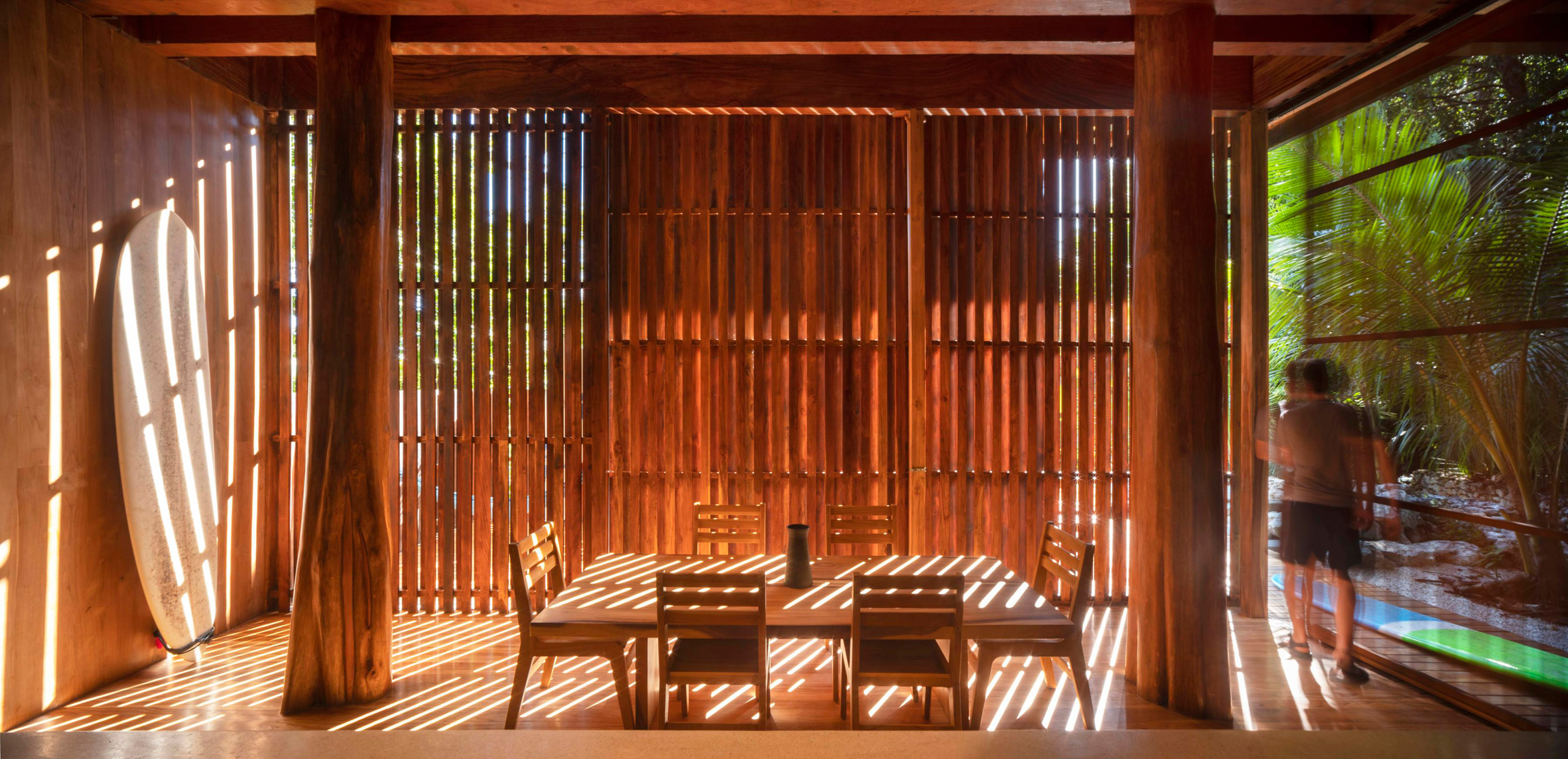
The interior has a warm and earthy atmosphere. Warm-toned teak was used for ceilings, floors and partitions. In some rooms, columns are made of knobby tree trunks, giving the dwelling an extra rustic feel.
Rooms are sparsely furnished with contemporary decor, including a wooden coffee table and a simple wooden couch with ivory cushions. On all levels, the team incorporated L-shaped terraces that extend the home's living space and offer places to stash surfboards.
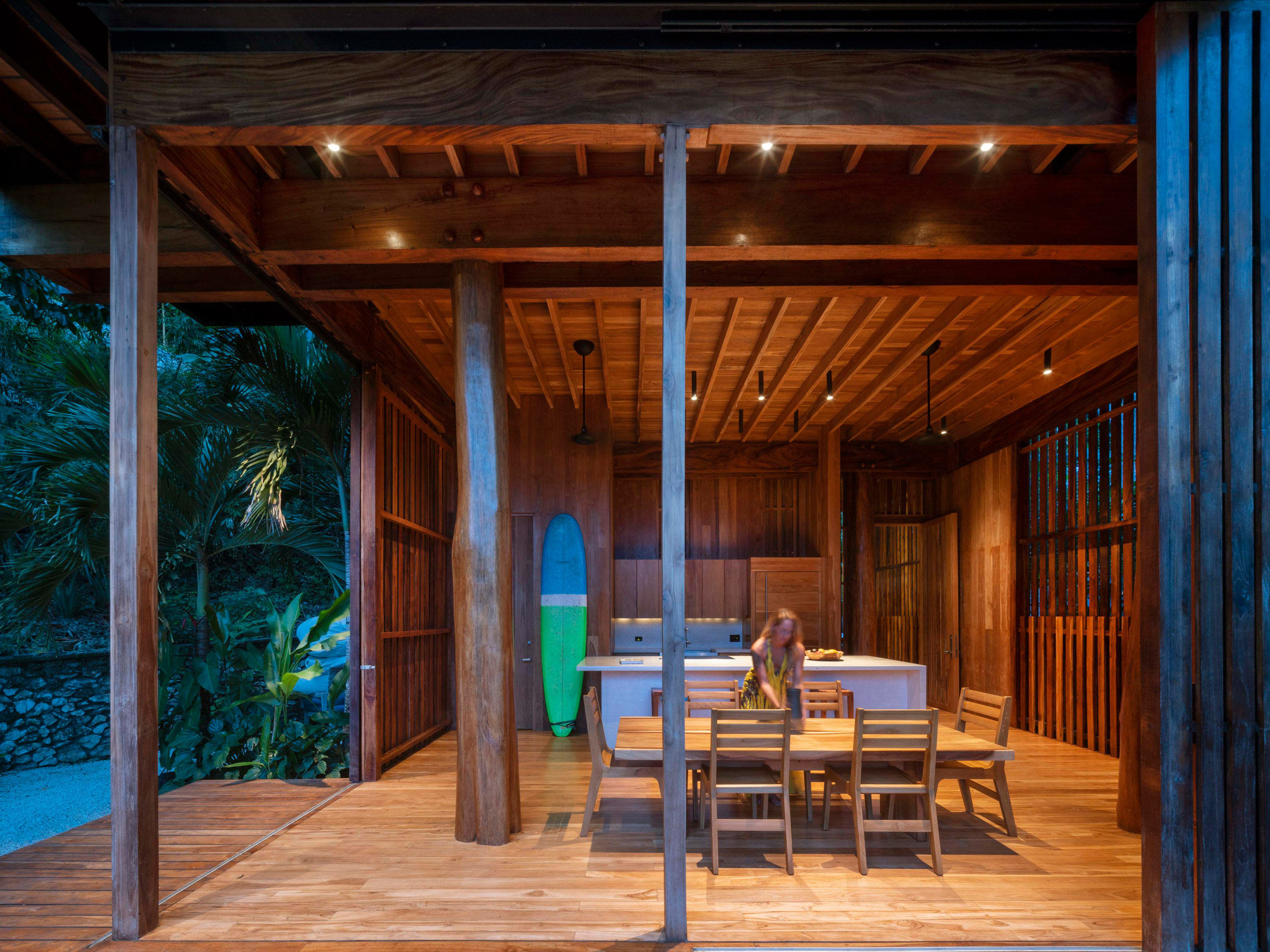
In addition to passive design features, the dwelling has a 3.5-kilowatt photovoltaic array and a rainwater collection system. Numerous sustainable elements "make the house's compact footprint even lighter on the land".
Founded in 1967, Olson Kundig is known for creating contemporary architecture is beautiful, rural settings. Other projects by the studio include the Trout Lake Residence in Washington, which features massive bi-folding doors, and the Bigwood Residence in Idaho, which has a wide glass wall that lifts upward to provide unencumbered views of the rugged landscape.
Photography is by Nic Lehoux.
The post Olson Kundig designs Costa Rica Treehouse to tread lightly on the earth appeared first on Dezeen.
http://bit.ly/2JfYzg0
twitter.com/3novicesindia
No comments:
Post a Comment